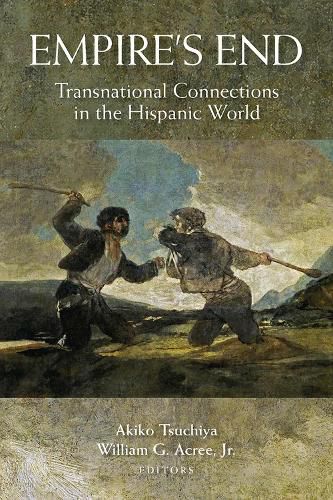Readings Newsletter
Become a Readings Member to make your shopping experience even easier.
Sign in or sign up for free!
You’re not far away from qualifying for FREE standard shipping within Australia
You’ve qualified for FREE standard shipping within Australia
The cart is loading…






The fall of the Spanish Empire: that period in the nineteenth century when it lost its colonies in Spanish America and the Philippines. How did it happen? What did the process of the
end of empire
look like? Empire’s End considers the nation’s imperial legacy beyond this period, all the way up to the present moment. In addition to scrutinizing the political, economic, and social implications of this
end,
these chapters emphasize the cultural impact of this process through an analysis of a wide range of representations - literature, literary histories, periodical publications, scientific texts, national symbols, museums, architectural monuments, and tourist routes - that formed the basis of transnational connections and exchange. The book breaks new ground by addressing the ramifications of Spain’s imperial project in relation to its former colonies, not only in Spanish America, but also in North Africa and the Philippines, thus generating new insights into the circuits of cultural exchange that link these four geographical areas that are rarely considered together.
Empire’s End showcases the work of scholars of literature, cultural studies, and history, centering on four interrelated issues crucial to understanding the end of the Spanish empire: the mappings of the Hispanic Atlantic, race, human rights, and the legacies of empire.
$9.00 standard shipping within Australia
FREE standard shipping within Australia for orders over $100.00
Express & International shipping calculated at checkout
The fall of the Spanish Empire: that period in the nineteenth century when it lost its colonies in Spanish America and the Philippines. How did it happen? What did the process of the
end of empire
look like? Empire’s End considers the nation’s imperial legacy beyond this period, all the way up to the present moment. In addition to scrutinizing the political, economic, and social implications of this
end,
these chapters emphasize the cultural impact of this process through an analysis of a wide range of representations - literature, literary histories, periodical publications, scientific texts, national symbols, museums, architectural monuments, and tourist routes - that formed the basis of transnational connections and exchange. The book breaks new ground by addressing the ramifications of Spain’s imperial project in relation to its former colonies, not only in Spanish America, but also in North Africa and the Philippines, thus generating new insights into the circuits of cultural exchange that link these four geographical areas that are rarely considered together.
Empire’s End showcases the work of scholars of literature, cultural studies, and history, centering on four interrelated issues crucial to understanding the end of the Spanish empire: the mappings of the Hispanic Atlantic, race, human rights, and the legacies of empire.